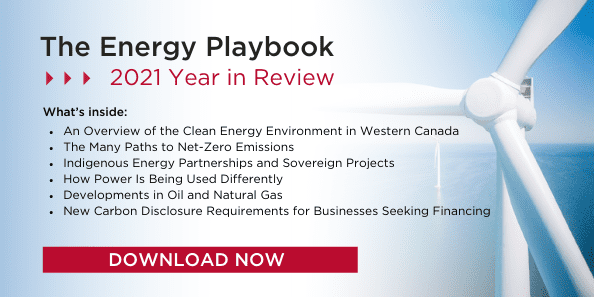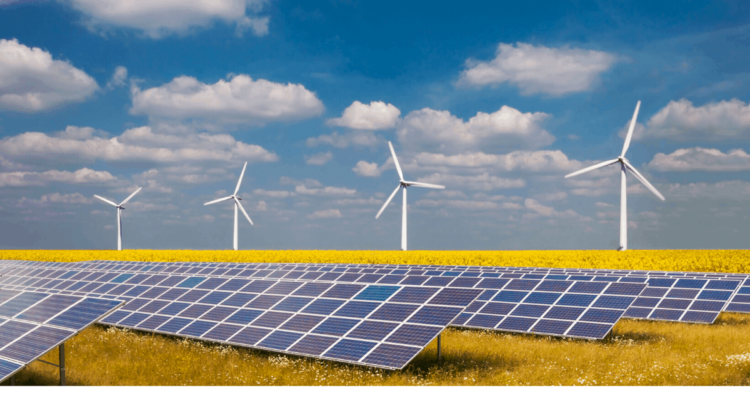The Promise of Hydrogen

Author: Ken Tennenhouse
Imagine if Western Canada’s bountiful hydrocarbon resources could be converted into a clean fuel capable of producing electricity and powering motors, all with zero greenhouse gas emissions. That’s the promise of hydrogen.
Hydrogen produces only oxygen and water as byproducts when burned in a turbine to produce electricity. Most hydrogen today is made from natural gas or methane in a process that strips out the carbon, which can be sequestered or captured for another use. Prototype hydrogen generation and transmission facilities can be found around the world. Small amounts of hydrogen can be blended into existing natural gas pipelines, but more robust pipelines are needed to carry pure hydrogen. The assumption is that the cost of hydrogen could become viable in the carbon-pricing environment of the future.
Hydrogen quick facts:
|
|
|
|
|
|
|
|
How big, how soon?
A big question is whether, and how quickly, the industry can scale up to production at a large scale. This would include industrial-scale hydrogen production, a network of pipelines to transport hydrogen and readily available equipment and personnel for customers to make use of this fuel.
In December 2020, NRCan published a report authored by Zen and the Art of Clean Energy Solutions titled: A Hydrogen Strategy for Canada: Seizing the Opportunities for Hydrogen. The report states:
Canada has all the ingredients necessary to develop a competitive and sustainable hydrogen economy. The modernization of Canada’s energy systems towards a low-carbon economy presents a unique opportunity to leverage Canadians’ expertise to build new infrastructure assets to serve as a backbone for a low-carbon energy ecosystem across Canada with hydrogen playing an integral role, delivering up to 30% of Canada’s end-use energy by 2050.
Planned actions by NRCan plans to include encouraging early deployment hubs in mature applications, Canadian demonstrations in emerging applications and employing regulations including the forthcoming Clean Fuel Standard to drive near-term investments. The report contemplates various roles for hydrogen in the energy system:
Hydrogen can act as an energy carrier to enable increased penetration of renewables by providing time shifting and energy storage capabilities. Hydrogen adds optionality in a future net-zero mix, complementing other energy vectors such as direct electrification and biofuels, and serving as a bridge between energy grids in an integrated energy system…
Adoption of hydrogen will be focused on energy-intensive applications where it offers advantages over alternative low-carbon options. This includes using hydrogen as a fuel for long-range transportation and power generation, to provide heat for industry and buildings, and as a feedstock for industrial processes.
Developments in 2021
In November 2021, the Province of Alberta published its Hydrogen Roadmap, aimed at accelerating the transition to hydrogen and carbon-capture.
In June 2021, Air Products Canada Ltd., in conjunction with the Governments of Canada and Alberta, announced a $1.3 billion net-zero hydrogen production and liquefaction facility to be built in Edmonton, expected onstream in 2024. The announcement states:
The new facility will capture over 95 percent of the carbon dioxide (CO2) from the feedstock natural gas and store it safely back underground. Hydrogen-fueled electricity will offset the remaining five percent of emissions. The clean energy complex will help refining and petrochemical customers served by the Air Products [55-kilometer] Heartland Hydrogen Pipeline to reduce their carbon intensity. The complex also marks a first in the wider use of hydrogen in Alberta, enabling the production of liquid hydrogen to be an emissions-free fuel in the transportation sector, and to generate clean electricity.
Also in June 2021, AECOM and EllisDon Corp. announced a partnership to move forward on constructing the $9 billion Prairie Link high-speed rail project connecting Edmonton and Calgary. Trains will operate with electric or hydrogen fuel cell propulsion.
ATCO has partnered with Suncor Energy to construct a facility near Fort Saskatchewan to produce more than 300,000 tons per year of hydrogen using advanced technology. The facility could be operational by 2028. In May 2021, Canadian Utilities Ltd., a subsidiary of ATCO, announced plans to blend hydrogen into a subsection of its Fort Saskatchewan natural gas distribution system at a concentration of 5% by volume. Blending hydrogen into the pipeline reduces the greenhouse gas intensity of the natural gas stream.
In September 2021, Mitsubishi Corporation and Shell Canada Limited announced a Memorandum of Understanding for producing low-carbon hydrogen using steam methane reforming technology. A new production facility near the Shell Energy and Chemicals Park Scotford is planned to come online toward the latter half of this decade, and Shell will provide CO2 storage via the proposed Polaris CCS project. Hydrogen will be produced from a natural gas feedstock and exported mainly to the Japanese market to produce clean energy. The first phase of the project will produce 165,000 tons per year of hydrogen, which will be converted to low-carbon ammonia for export.
In October 2021, TC Energy announced a strategic collaboration with Nikola Corporation aimed at the development, construction, ownership and operation of critical hydrogen infrastructure for hydrogen-fuelled zero-emission heavy-duty trucks. The announcement states:
A key objective of the collaboration is to establish hubs producing 150 tons or more of hydrogen per day near highly traveled truck corridors to serve Nikola’s planned need for hydrogen to fuel its Class 8 FCEVs within the next five years. TC Energy has significant pipeline, storage and power assets that potentially can be leveraged to lower the cost and increase the speed of delivery of these hydrogen production hubs. This may include exploring the integration of midstream assets to enable hydrogen distribution and storage via pipeline and/or to deliver CO2 to permanent sequestration sites to decarbonize the hydrogen production process.
All eyes will be watching whether hydrogen develops into a small, medium or very large part of Western Canada’s energy future.
This article is part of The Energy Playbook: 2021 Year in Review which highlights key developments in Western Canada throughout the past year and discusses some of the risks and opportunities for businesses. Download the FREE e-book.
Note: This article is of a general nature only and is not exhaustive of all possible legal rights or remedies. In addition, laws may change over time and should be interpreted only in the context of particular circumstances such that these materials are not intended to be relied upon or taken as legal advice or opinion. Readers should consult a legal professional for specific advice in any particular situation.



